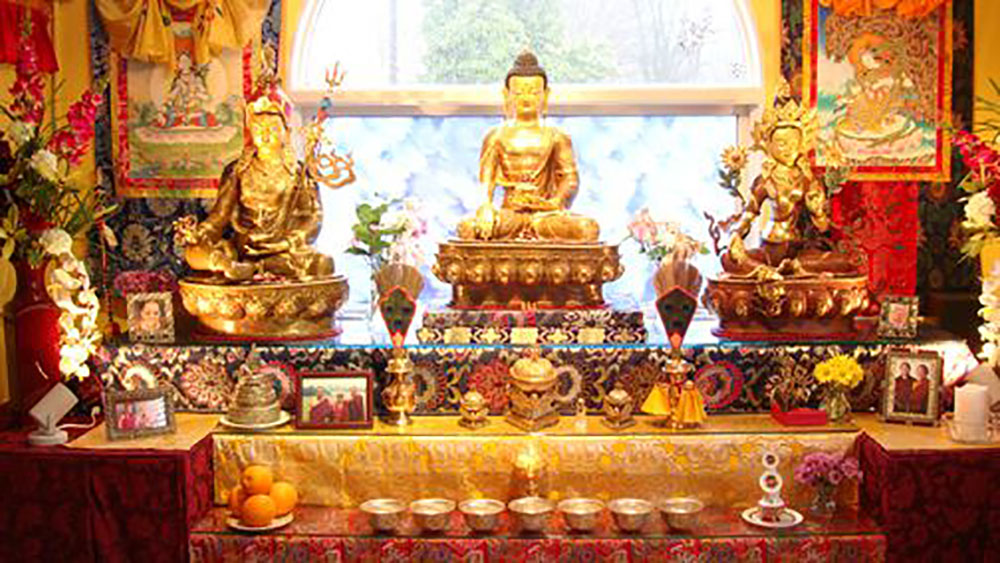In Vajrayana Buddhism, the altar acts as a focal point for the skillful means of practice. The relics, images, and offerings placed on it help to support awareness, gather merit, and inspire our daily practice.
In this candid video, Lama Lena takes us on a tour of her home altar, explaining the symbolic meaning of each component on a traditional Vajrayana shrine. She even shows us how to make traditional tsampa tormas for offerings, whipping them up in her kitchen!
“The most important aspect of any practice is the mind. It is not necessary to set up a shrine to practice meditation or to tame the mind. But the Vajrayana path of practice is a very gentle and skillful way to train the mind through very precise and disciplined methods. In Vajrayana every recitation, ritual, or symbol must be seen as a way to train the mind’s essential mindfulness and awareness. Therefore prior to beginning the Vajrayana preliminary practices, it is important to set up a proper shrine. Knowing that, yes, what you are generating is essentially mind’s projection; nevertheless while relative experiences still have the power to hinder or inspire you, the field of merit and objects of support are still important.”
Jetsün Khandro Rinpoche
Traditionally, dharma teachings are offered free of charge and students offer a donation (dana) as they are able to. If you benefited from this teaching and have the means, please offer dana through the link here: lamalenateachings.com/give-dana

